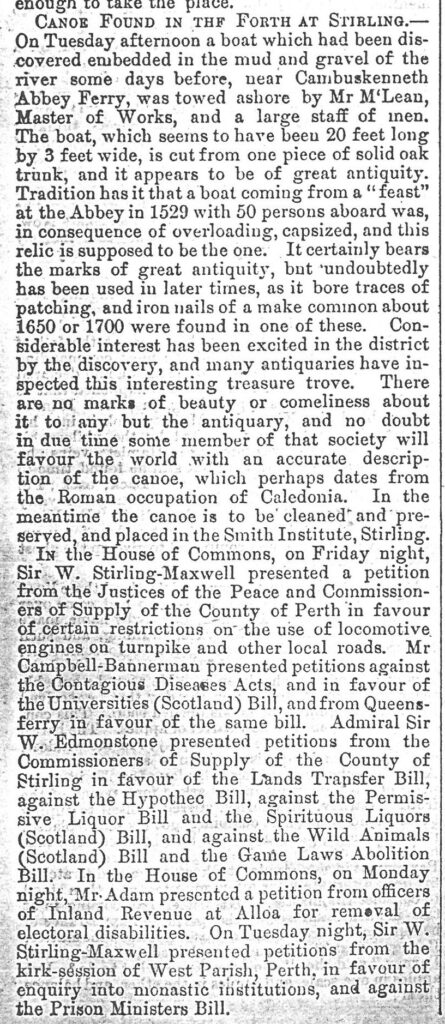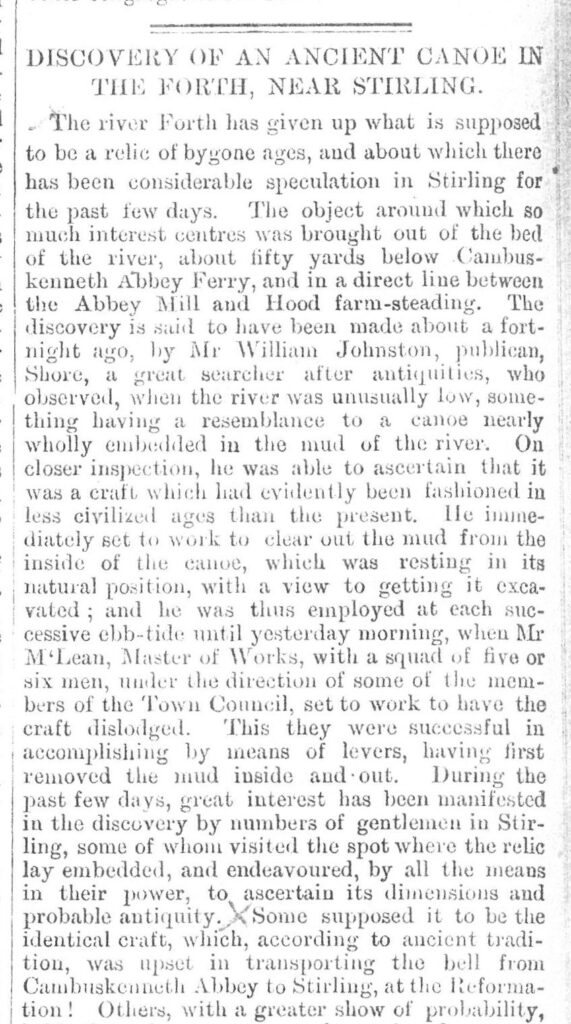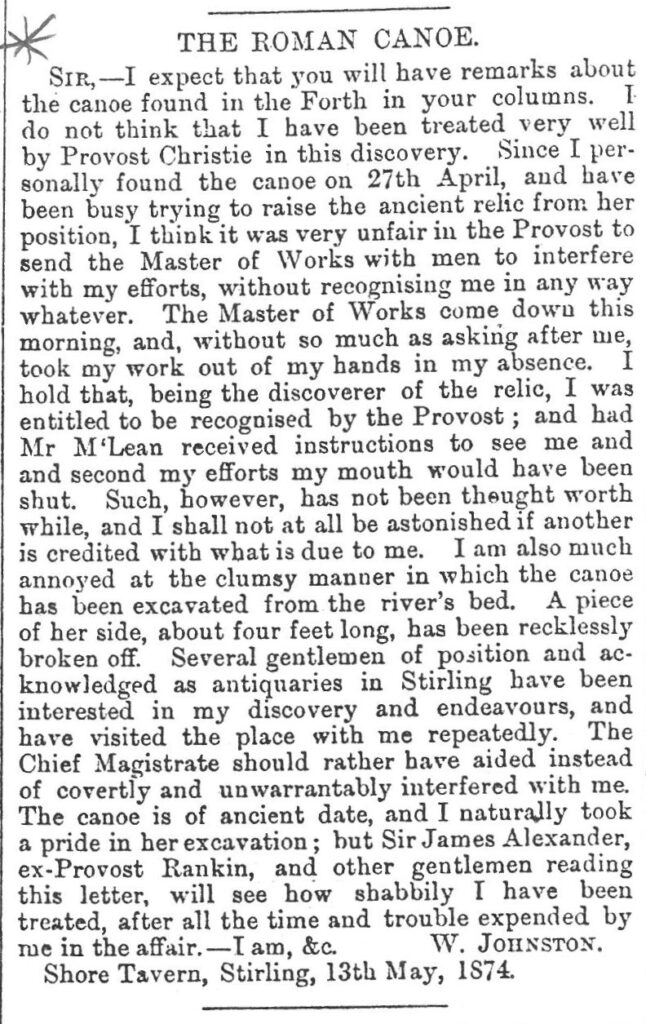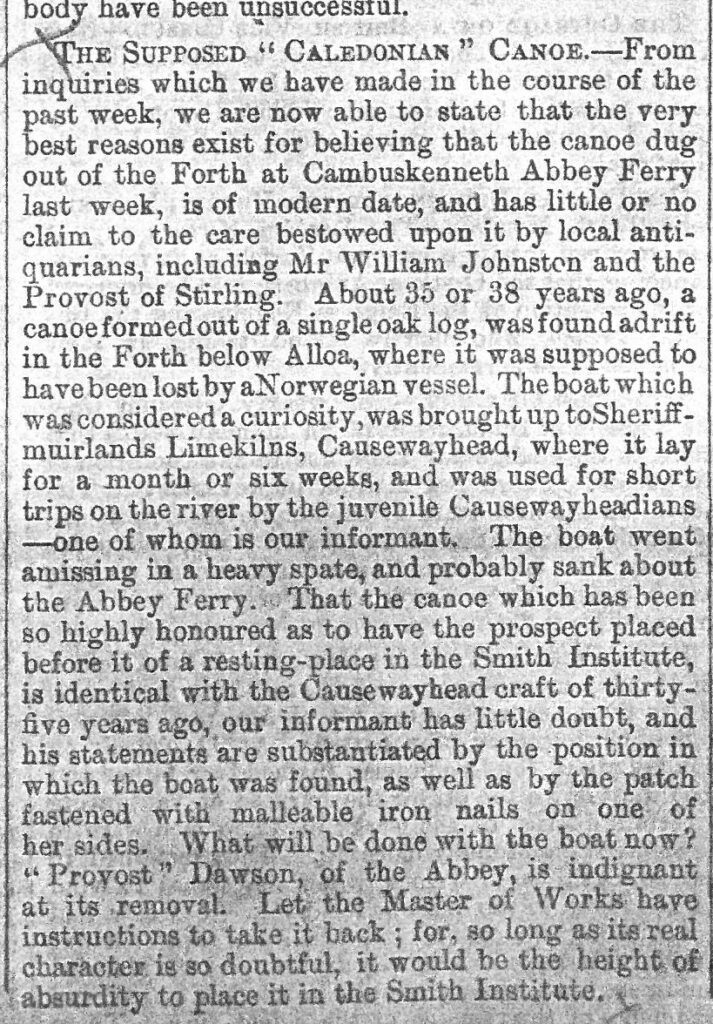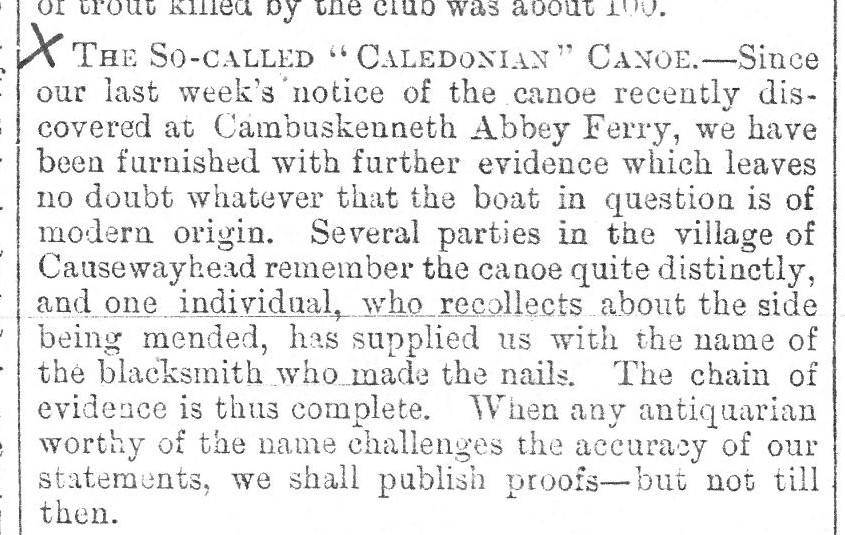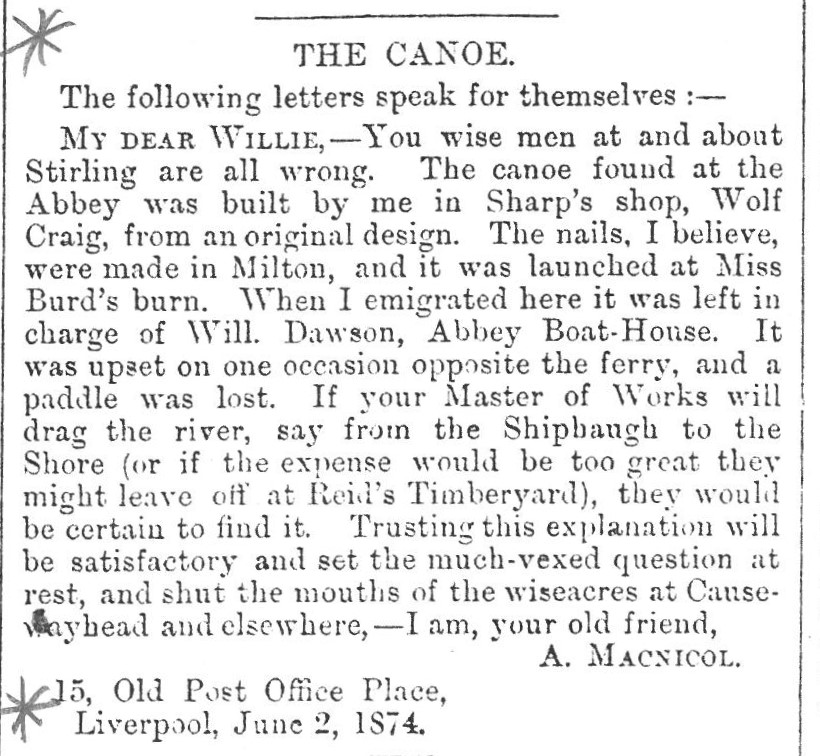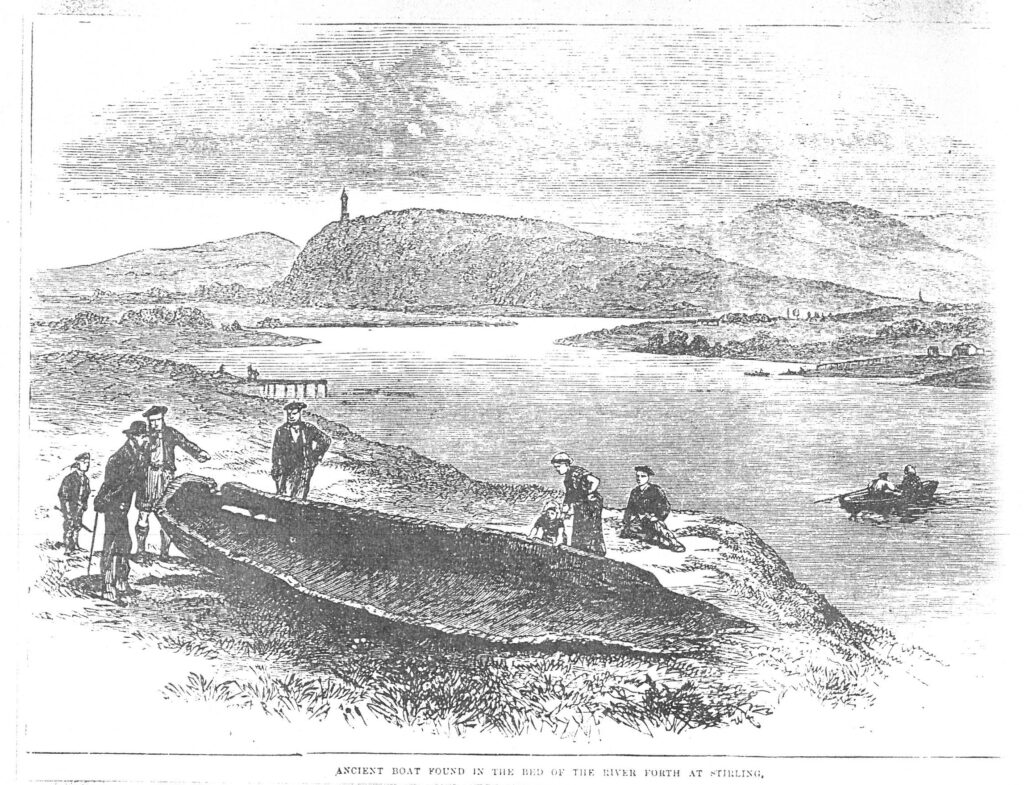On the 14th and 15th May 1874, articles appeared in the Stirling Observer and Stirling Journal concerning the discovery of an ancient canoe in the river Forth. It appeared fifty yards below the old Cambuskenneth Ferry, where footbridge connecting Riverside and Cambuskenneth stands today.
The object had caused quite a stir in the local community. Local antiquarians gathered to discuss its origins. Some believed it was the boat used to transport the bell from Cambuskenneth Abbey to Stirling during the reformation. Others believed it was the boat that capsized after feast at Cambuskenneth Abbey in 1529 when fifty persons were overloaded onto it.
Nonetheless, the canoe was pulled ashore by Mr McLean, Master of Works for Stirling Burgh, with help of a squad of men. It was taken to a shed behind the Corn Exchange in Stirling with the intention for it to go on display at the Stirling Smith Museum.
A letter, however, appeared next to the main articles in local newspapers. It was from man called William Johnson, a local from Shore Road in Stirling. He disgruntledly stated that he had originally found the canoe on 27th April and had been very poorly treated by Provost Christie on the matter. He believed the canoe dated back to the time of the Picts.
He remarked that he received no recognition from the Town Council for finding the canoe and had been thoroughly unimpressed by the attempts to raise it from the river. Johnston claimed he had been trying to raise it himself and when the Master of Works came to remove it, they did so in his absence. To make matters worse, he believed a part had been ripped off the canoe in the process.
In the following weeks, the Stirling Observer reported on their scepticism on the significance of the canoe. They had a small piece titled ‘The supposed Caledonian canoe’ in which they dismissed the opinion of William Johnston and the Provost of Stirling that it was relic from the Picts.
The canoe found at Cambuskenneth, they claimed, was remarkably similar to the one of Norwegian origin found in Alloa 35 years ago. This canoe was brought to Causewayhead and used for short trips up the river. It was of modern origin and stated it would be ‘the height of absurdity’ to place the new discovery in the Smith Museum.
William Johnston, obviously irked by the papers response, sent a letter to the Stirling Journal dismissing the claims above. He doubted that the source on the Causewayhead canoe had ‘any more knowledge of their history or antiquity than the pig has of watch making’.
The Observer retorted a week later. They cited more evidence of its modern origins with residents claiming they remembered the canoe at Causewayhead quite distinctly. The paper offered to publish proof of its claims if any antiquarian disagreed.
A final claim to origins of the canoe appeared in the Stirling Journal on 4th June from a Mr A McNicol in Liverpool. Hoping to put claims to rest and ‘shut the mouths of the wiseacres at Causewayhead and elsewhere’, he writes that he himself built the canoe at Sharp’s shop in Wolfcraig from an original design. When he left for Liverpool, he left the boat for William Dawson at the Abbey boathouse. It was ‘upset on one occasion and a paddle lost’. If the Town Council were to dredge the river they would find the paddle and put the matter to rest.
So who was right and what were the origins of the canoe? The canoe currently resides within Cambuskenneth Abbey. A Historic Environment Scotland report in 2012 noted that the canoe has yet to be tested, but states that comparable canoes in Scotland were in use over many millennia. Six similar canoes were found in the River Tay, with two dating from 1000 to 500 AD. They currently list the canoe as being of medieval origin and probably made between 1200-1500.
